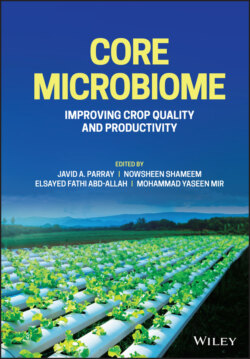Читать книгу Core Microbiome - Группа авторов - Страница 15
2.1 Introduction
ОглавлениеMicrobes are fundamental for a balanced life on Earth, and understanding their function is crucial. Culture-based microbial techniques and next-generation sequencing have added benefits. Metagenomics studies have allowed studying the microbial genome and its function, which are not culturable but have an essential role in the ecosystem. Microbiome study enables the exploration of the genome of all microorganisms, including symbiont and pathogens. The microbial community varies with host health and environmental factors that shape the microbiome. The concept of association of microbiome with plant health and disease state received focus over the past decades. However, it is critical to identify prominent microbiota associated with biotic stress in variable environmental conditions on the field, as most studies were conducted under greenhouse conditions. Core microbiota, a host-associated persistence microbial community carrying functional genes, are critically important for plant health. Therefore, identifying host-associated core microbiota and their response toward biotic stress is essential to understanding disease management and improving productivity.
Plant microbiome can be categorized at the interface where plant and microbes can communicate, which include plant–microbe interaction at rhizosphere, phyllosphere, and endosphere (Figure 2.1) [1]. Plant microbiome alters as plant species or cultivar changes; it also depends on plant developmental stages, disease conditions, and geographical locations [2].
Figure 2.1 Plant–microbe interaction in rhizosphere, endosphere, and phyllosphere and biocontrol mechanism acquired by beneficial microorganism.
